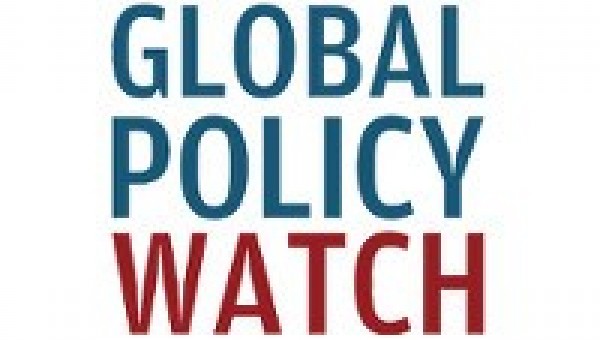News

By Sarah Dayringer
The UN Statistical Commission (UNSC) is comprised of Chief Statisticians from National Statistical Offices (NSOs) and has a working method of decision by majority vote, rather than by consensus. “Data needs are vast and the Data Revolution is reshaping the landscape quickly,” John Pullinger, former chair of the UNSC said in his opening remarks of the 47th session of the Commission.
Discontent among many UNSC Member States with the Inter-Agency and Expert Group on Sustainable Development Goals (IAEG-SDGs) indicator framework was apparent. Following the opening remarks, more than 80 Member States raised concerns. There’s an overall sense among most developing countries, notably from Least Developed Countries (LDCs), African Group, Land-locked Developing Countries (LLDCs), Small Island Developing States (SIDSs) and the Alliance of Small Island States (AOSIS) that complex targets are being translated into simple indicators which focus on developing countries and leave out the responsibility of developed countries. However, the USA urged the Commission to adopt the IAEG-SDGs global indicator framework, with the recommendation that the IAEG-SDGs “ensure full coverage of the scope of each target and evaluation of the functioning of the initial indicator set.”
Concerns include:
- The Group of 77 (G-77) & China stated that the global indicator framework should encompass all of the 17 SDGs and 169 targets in a balanced and integrated manner, including Goal 17 on Means of Implementation (MoI) and said the “indicators should be faithful and relevant to the 2030 Agenda and should not re-interpret targets.” The Group emphasized the importance of “procedures for the methodological review of indicators, including approval mechanisms of needed revisions or replacements, and the development of a global reporting mechanism.”
- India raised concerns about the use of perception surveys or opinion polls as indicators for some of the targets, noting that there are no internationally accepted standards or guidelines for them, and cautioning that they could be “overly subjective, imprecise and also prone to misuse.”
- SIDS and AOSIS emphasized that capacity-building is needed to support their National Statistical Offices (NSOs).
- LDCs recalled the purpose of the LDC Technology Bank and the role it has in the 2030 Agenda for Sustainable Development as well as highlighting the indicator on proportion of population using internet does not capture the relevant target, thus are concerned that the “indicators don’t address the targets.”
- The Community of Latin American and Caribbean States (CELAC) noted the inadequacy of the indicators to measure inequality
The IAEG-SDGs is meeting in Mexico from 30 March to 1 April 2016 and will take the process forward. Its report and work plan recognize that more work needs to be done on the indicators, starting with their classification into three tiers, as follows:
- Tier 1: the indicators for which there are existing data and methodologies
- Tier 2: indicators for which methodologies are established but data is not yet readily available
- Tier 3: indicators for which no methodology has been created
Since the framework is designed to continue to improve as the technology landscape changes over the next 15 years, the IAEG-SDGs will focus on developing Tier 3 indicators, issuing further guidance on data disaggregation and examining inter-linkages between targets and goals and the possibility of identifying some multi-purpose indicators.
A decision by the UN Statistical Commission concerning the proposed indicator framework is anticipated on 11 March 2016. There is also strong pressure to address the need for capacity building of NSOs along with concerns about the process through which revised indicators might be agreed. As the G-77 stated, “the adoption of the report of the IAEG-SGDs by the Statistical Commission at the end of this week is not and will not be the end.”
The current draft is available here. More on the deliberations of the 47th Session of the Commission can be found on the United Nations Statistical Division page.
